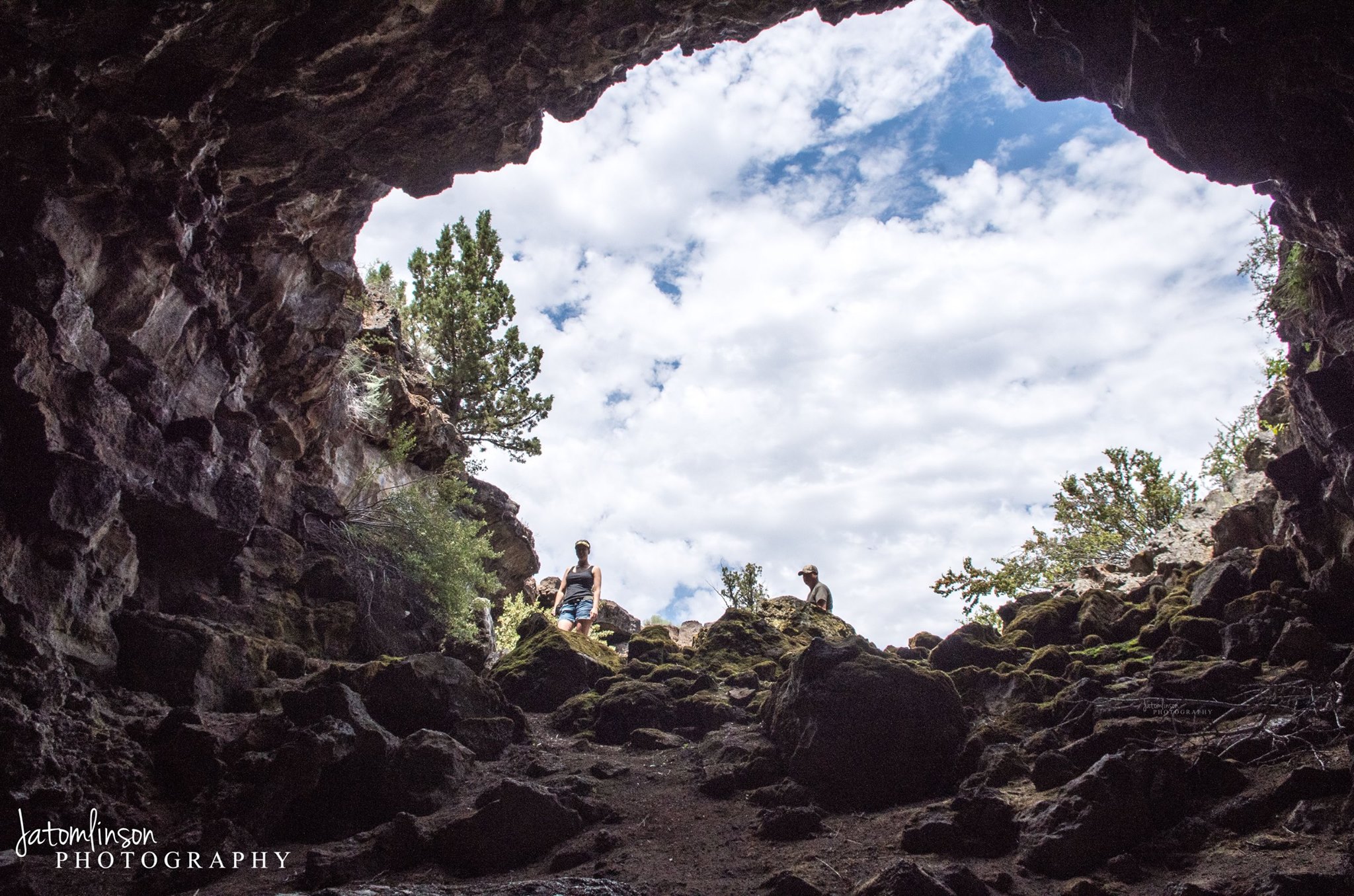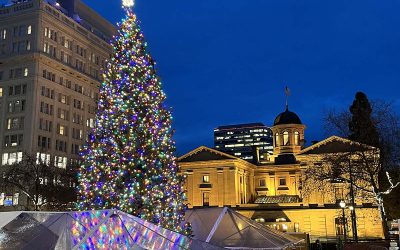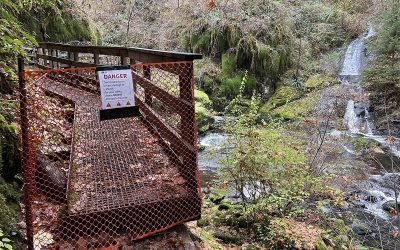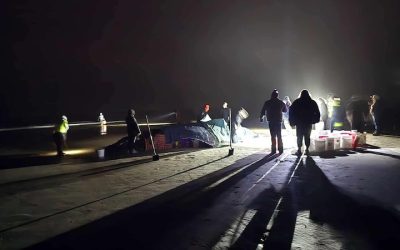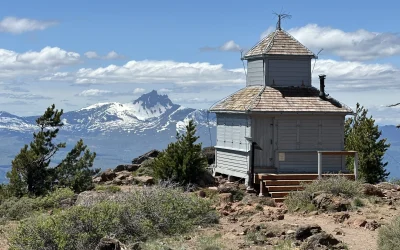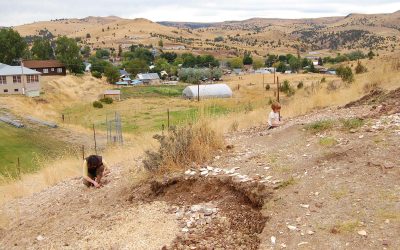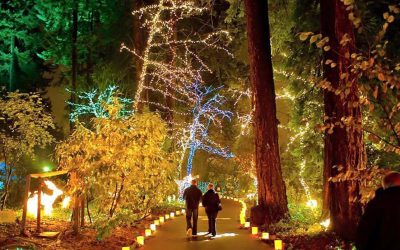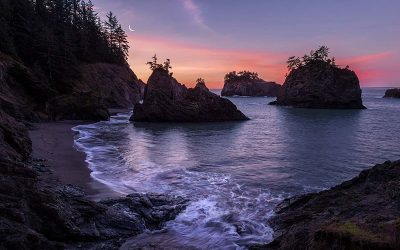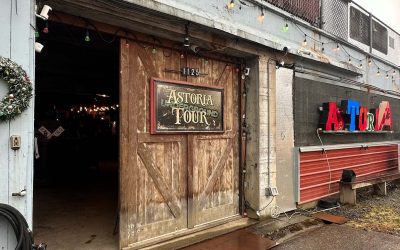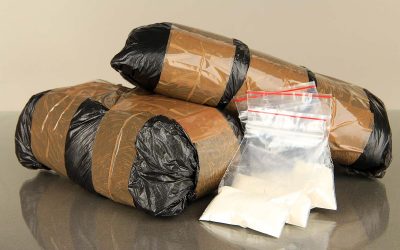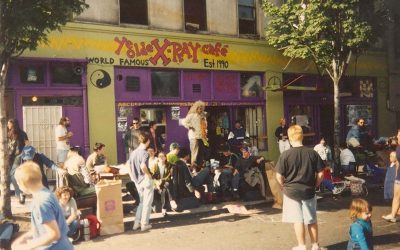900 caves, pretty wildflowers, stunning vistas, and oh yeah, did we mention that it's not far from the Oregon-California border? A year pass gets you in here and at Crater Lake National Park!
Hey, what's the big deal? You're an Oregon travel blog, so why the heck are you guys writing about a place in California? Two reasons—first off, this spot is not far from the Oregon-California border. Second, this is my favorite place on the planet to visit. I've been there many times, and here at That Oregon Life we love to share cool spots that you might want to visit, even if it means a quick trip over one of our borders. There's also the fact that this spot is sort of like a sister site to Crater Lake National Park. A yearly pass to Crater Lake will also get you into the Lava Beds, so why not head south after a visit to Crater Lake and hit the Lava Beds too?
What I Love About The Lava Beds National Monument
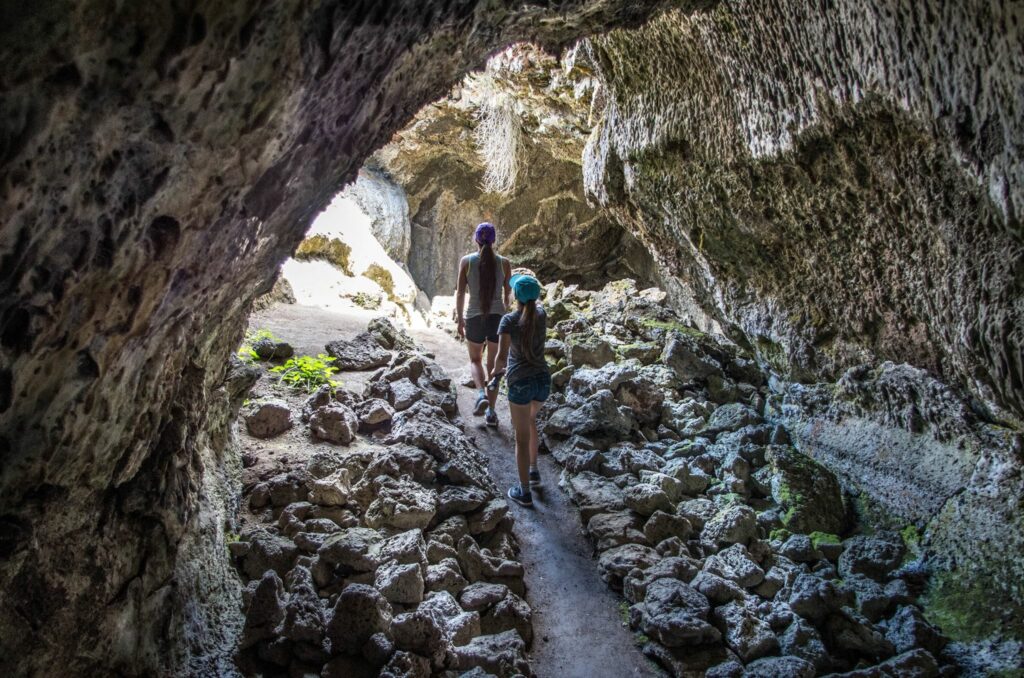
Ok author, so you like this park chock full of caves (over 900 of them) down in California. So what? Oregon has caves too. Sure, Oregon has the Oregon Caves National Monument near Cave Junction, but you have to take a tour to see the cave. We also have the Newberry National Volcanic Monument not too far from Bend, which has a one mile long lava tube that you can check out. That's a cool spot, and we highly recommend that you visit both the Oregon Caves and Newberry.
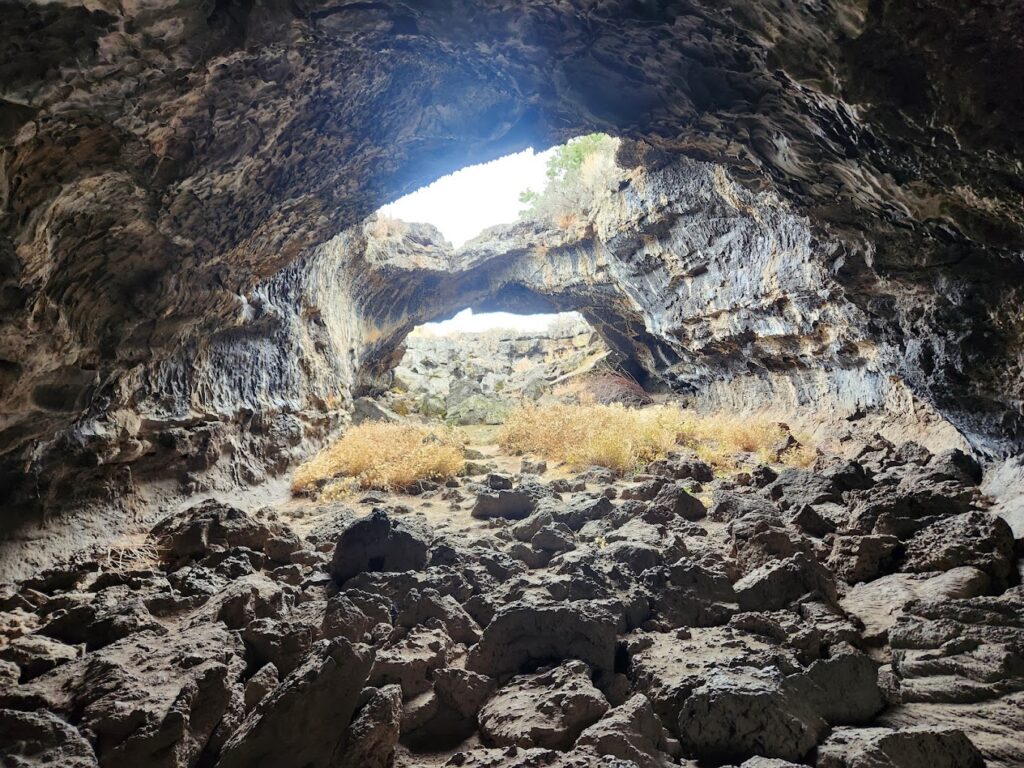
But there are definitely reasons you should head further south and check out the Lava Beds National Monument. The Lava Beds near Tule Lake, California has over 900 caves, and the best part? You can explore almost all of them on your own.
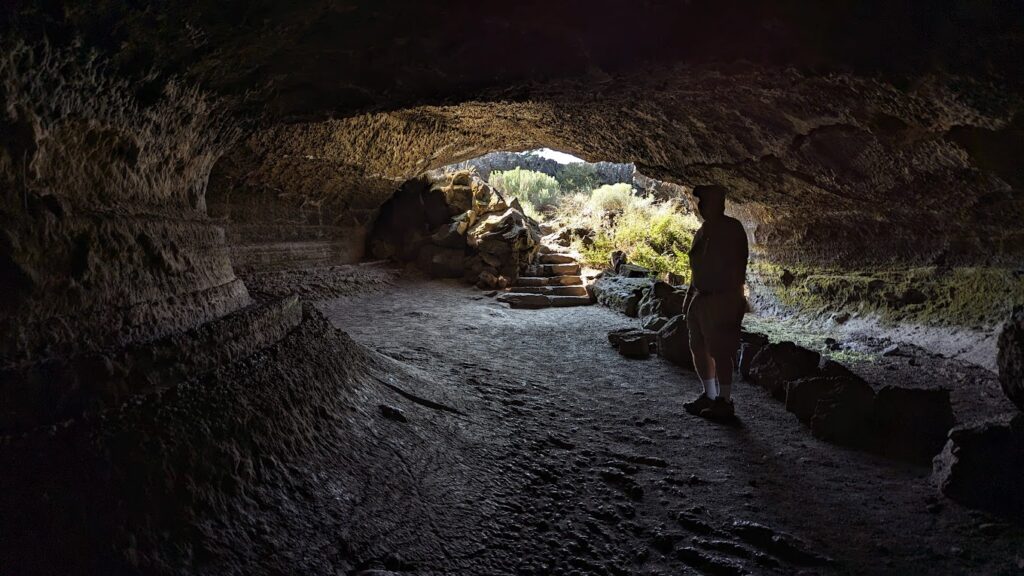
There's only a couple of caves here that have restricted public access and require a tour. Day, night, summer, winter, snow on the ground—you can get in at any time and go caving through both improved and unimproved lava tubes.
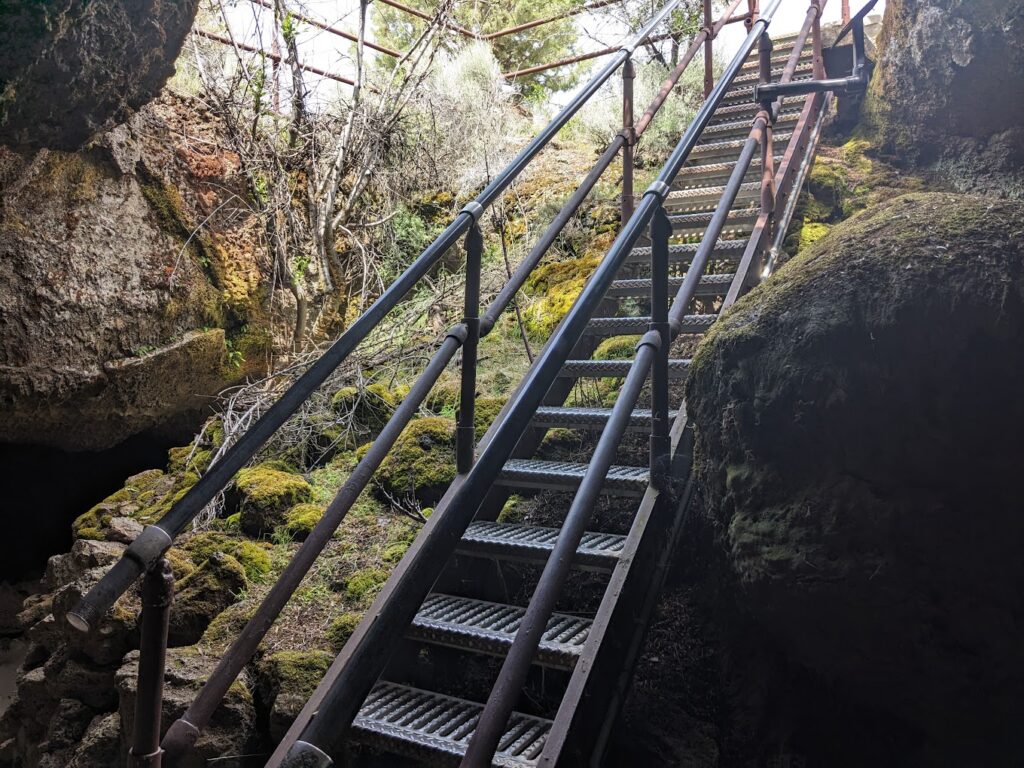
On top of that, this is a gorgeous site out in Northern California's high desert, full of bright red Indian Paintbrush in the late spring and early summer.
You'll also find a few scattered trees and lots of sage, along with some pretty stunning vistas. Once I was lucky enough to be there during a summer thunderstorm.
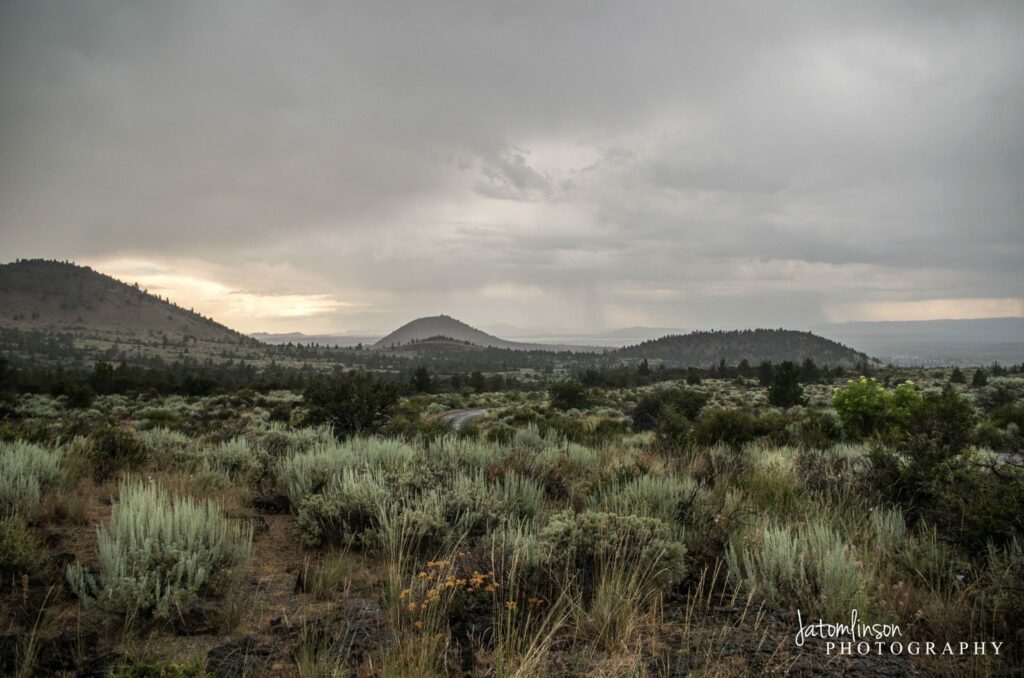
I was out on a trail to Heppe Ice Cave and turned around and caught a glimpse of the storm rolling in over the bluffs and nearby fields. It was awesome.
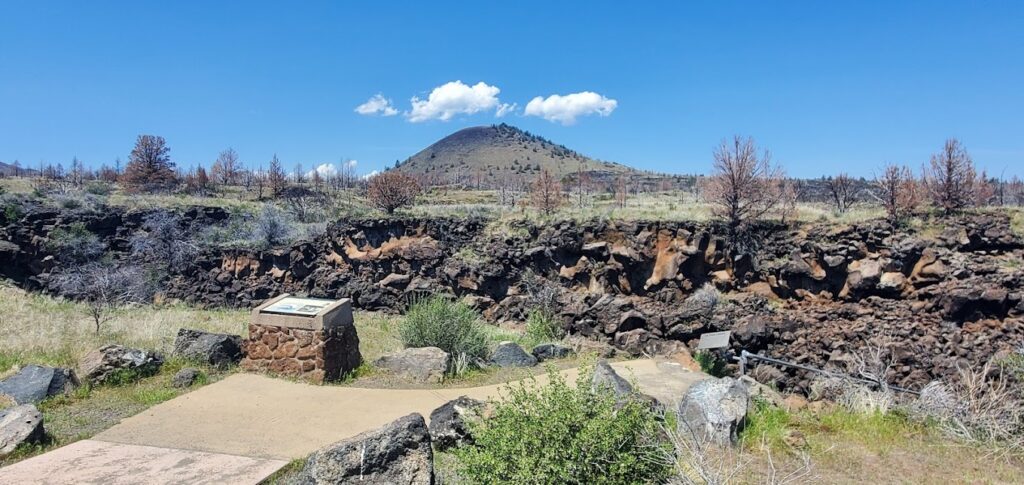
Oh yeah, and did I mention that you get to see volcanoes here? When you're driving through the monument, anything that looks like a volcano is one. There are little cinder cone volcanoes (known as buttes locally) dotting the landscape wherever you look. One of them has a lookout on top.
Recommendations For A Few Caves You Should Visit While You're There
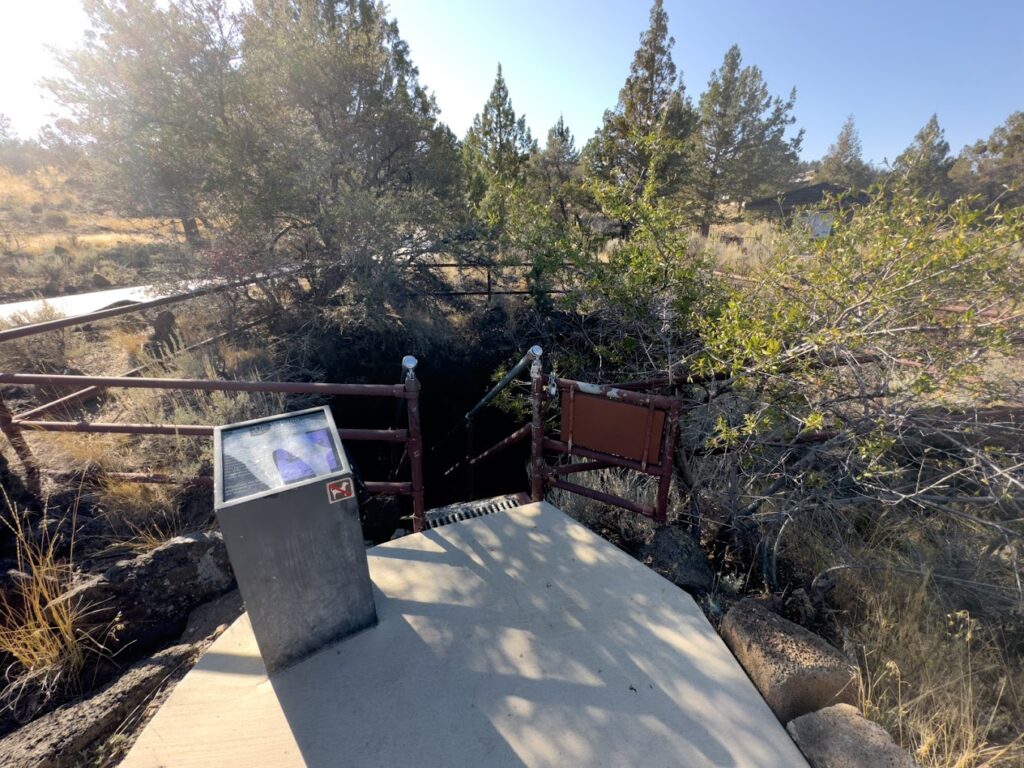
Your easiest bet to get in and out of these caves is to check out all of the improved caves on Cave Loop Road (which starts and ends at the Visitor Center). Improved caves have a ladder or stairs leading into them, and somewhat of a path through them. Many of the caves on Cave Loop Road still require bouldering and navigating large, loose rocks underfoot, so be prepared to traverse uneasy terrain.
Uneasy terrain? Does this mean it's not a good place to take kids? No, this is a great spot to take kids! Local school children take field trips to the Lava Beds every year, along with Girl and Boy Scouts and families. You'll have to carry kids under five through some of the rough spots if you go through unimproved caves. There are plenty of caves you can get through with kids ages 5-10 however, and kids over the age of ten should be able to make it through the rest of the caves with adult supervision.
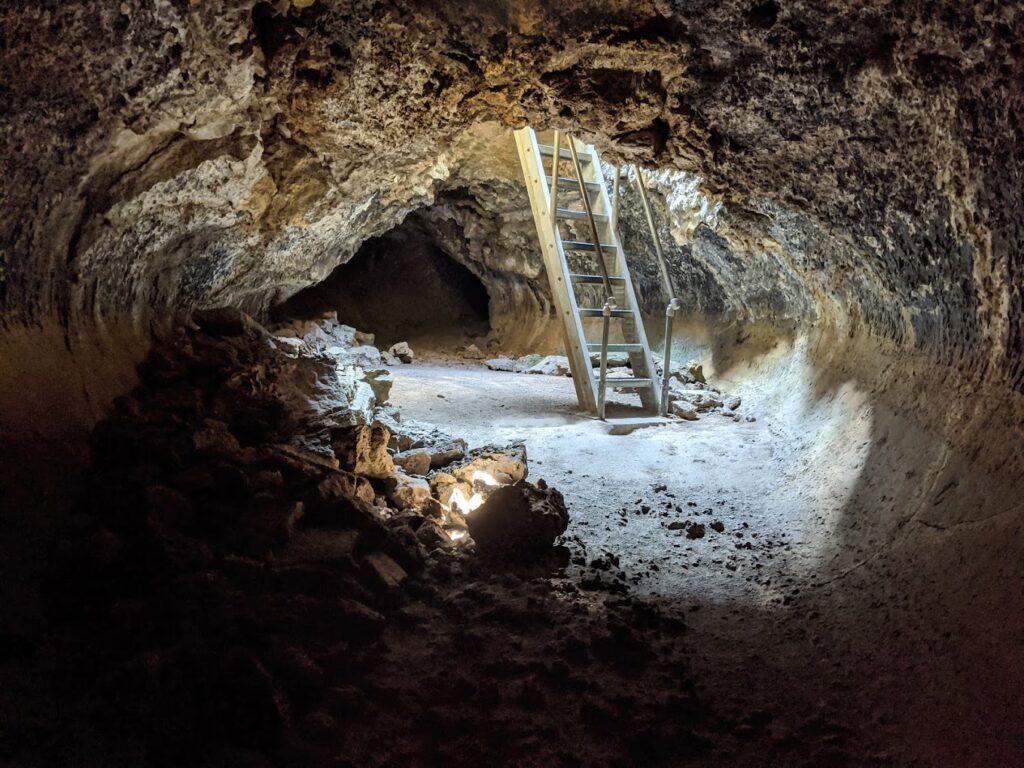
Some of my personal favorite caves on Cave Loop Road are Blue Grotto and Sunshine. Sunshine is cool because of the skylights (openings in the cave ceiling) that let light in at various points. Many people enjoy Catacombs Cave, which has all kinds of passageways and is long and winding.
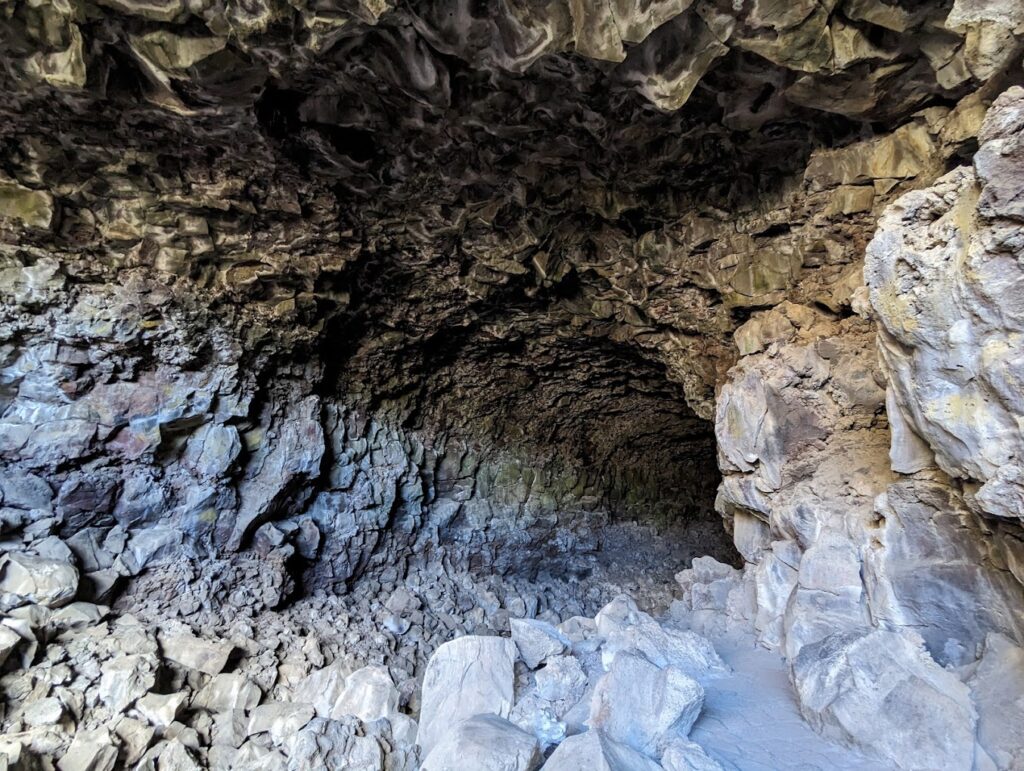
There are several small spaces you could crawl into in Catacombs and easily get lost in (or pop out into other caves). I have been in Catacombs at least twice while search and rescue was in there looking for missing people, so be careful. Catacombs is well worth the visit, but easy to get lost in if you insist on crawling through crevices.
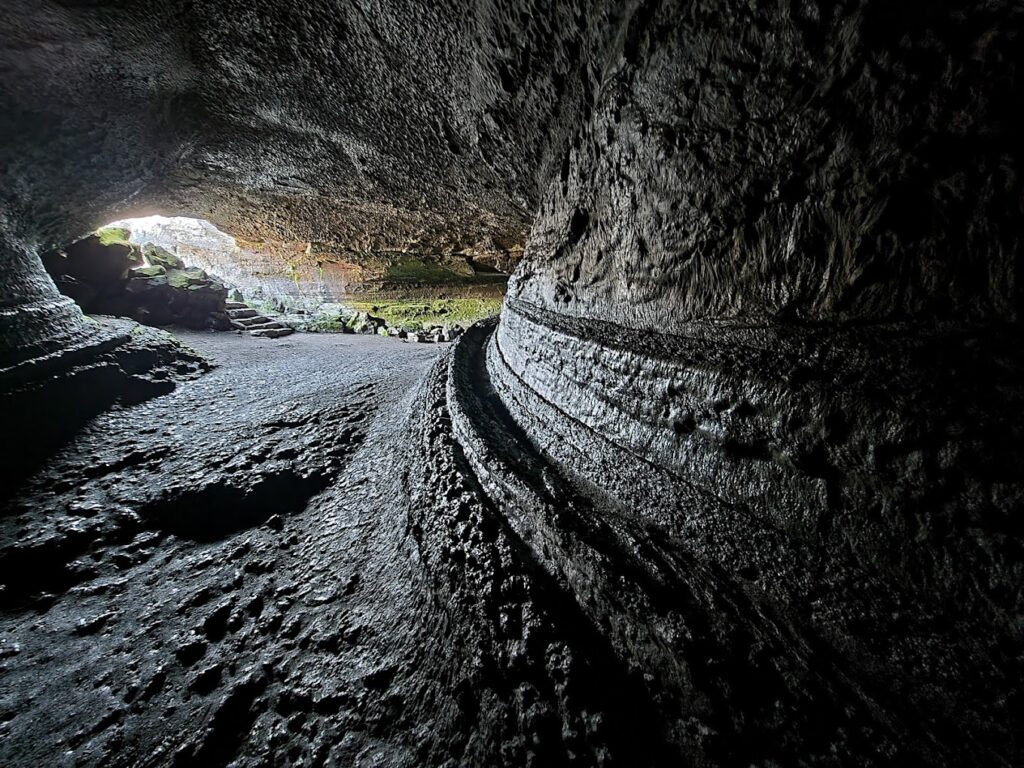
Away from Cave Loop Road there are hundreds of other caves to explore. My personal favorite is Heppe Ice Cave. You'll have to drive down a dirt road to get there, and then take the Heppe Cave Trail.
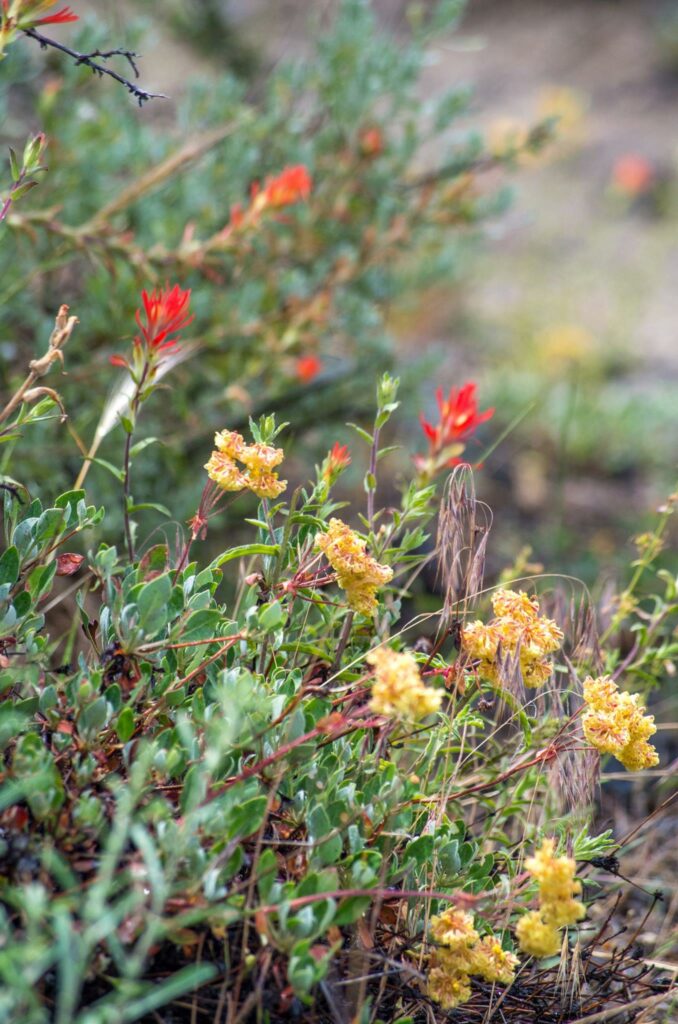
The trail is pretty easy to navigate and follows a clear path. It's not quite a mile long, and is a prime spot to see Indian Paintbrush in the late spring and early summer.
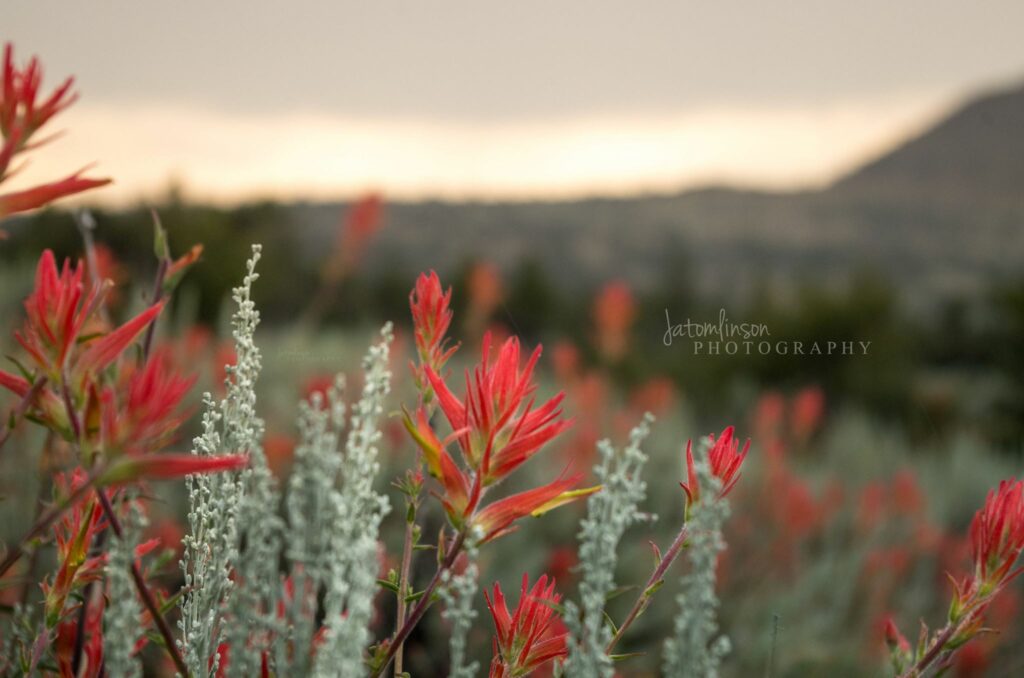
At the end of the trail you'll climb down into a crater (collapsed cave) and into a huge cave entrance. There is a pond at the bottom which freezes during the winter. In the photo below you can see the pond is a dark spot at the bottom right of the cave.
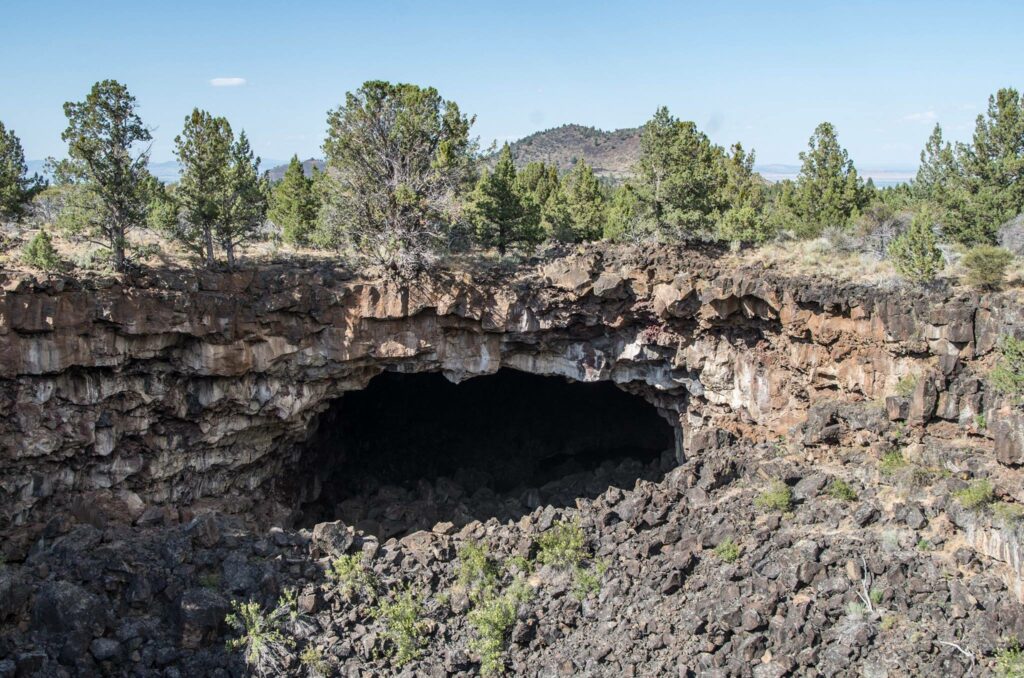
If you get there early enough in the spring, the pond will still be frozen. It's cool because there are often trails of air bubbles frozen in the ice. (Note that if you go in late summer, the pond may be dry).
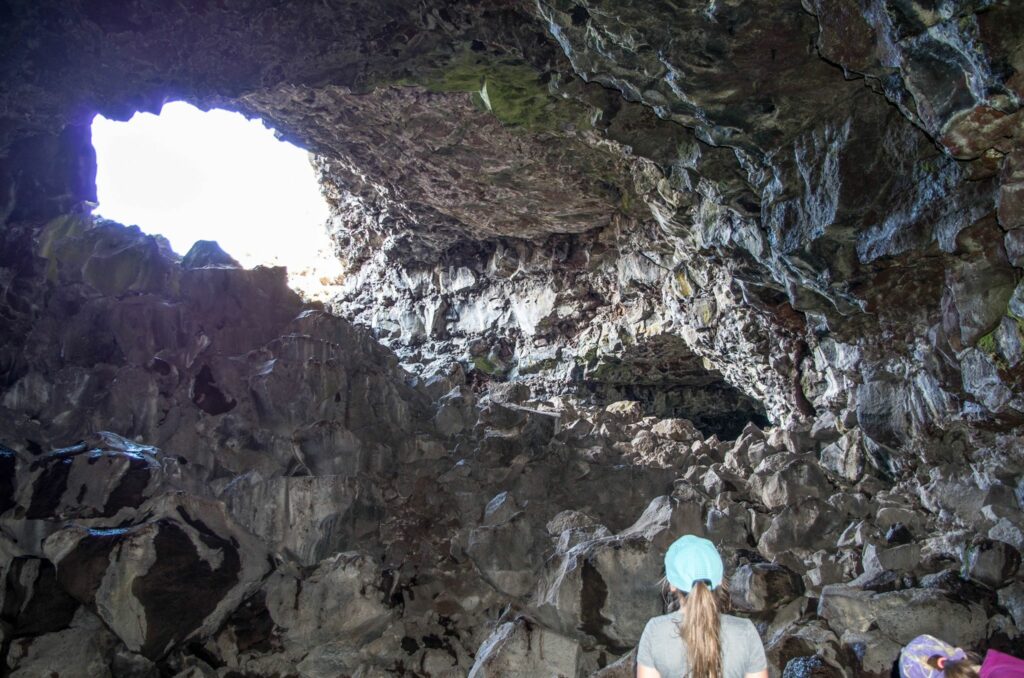
You can continue past the pond at the bottom and out the other side, across another crater and into another cave.
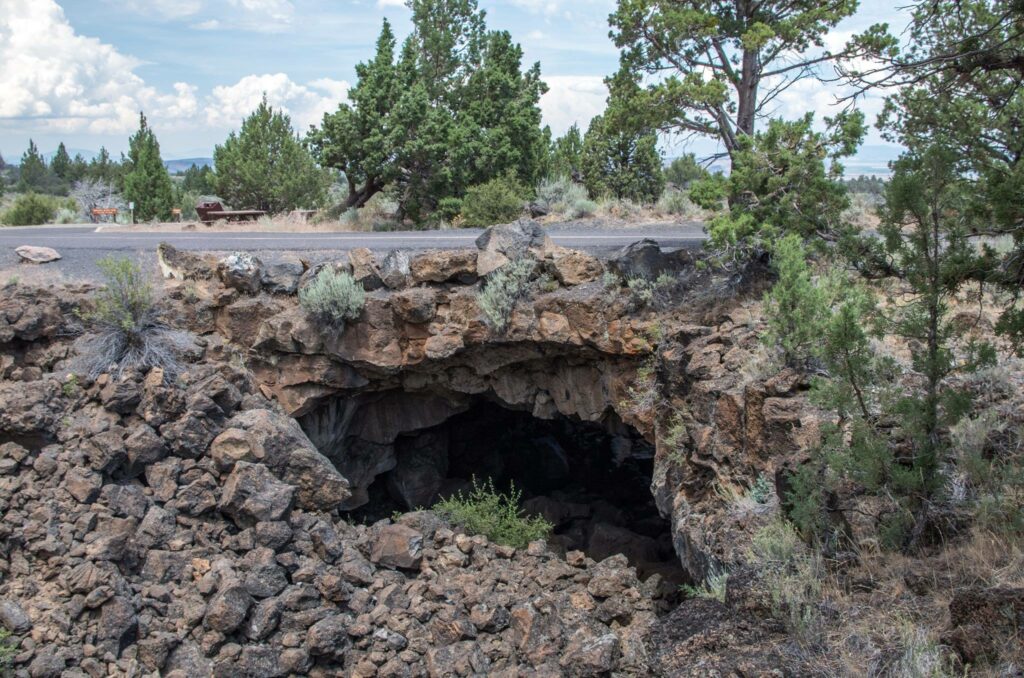
If you're looking for another ice cave, check out Merril Cave which is also down it's own road, this one paved. This is a much smaller cave than Heppe. Merril Cave is clearly marked, but if you walk across the road from Merril as seen above, and are able to navigate the boulders in the crater on the other side, there's another small cave that sometimes has ice.

Skull Cave (which is huge and will have you going down many flights of metal stairs), and Valentine Cave are also visitor favorites.
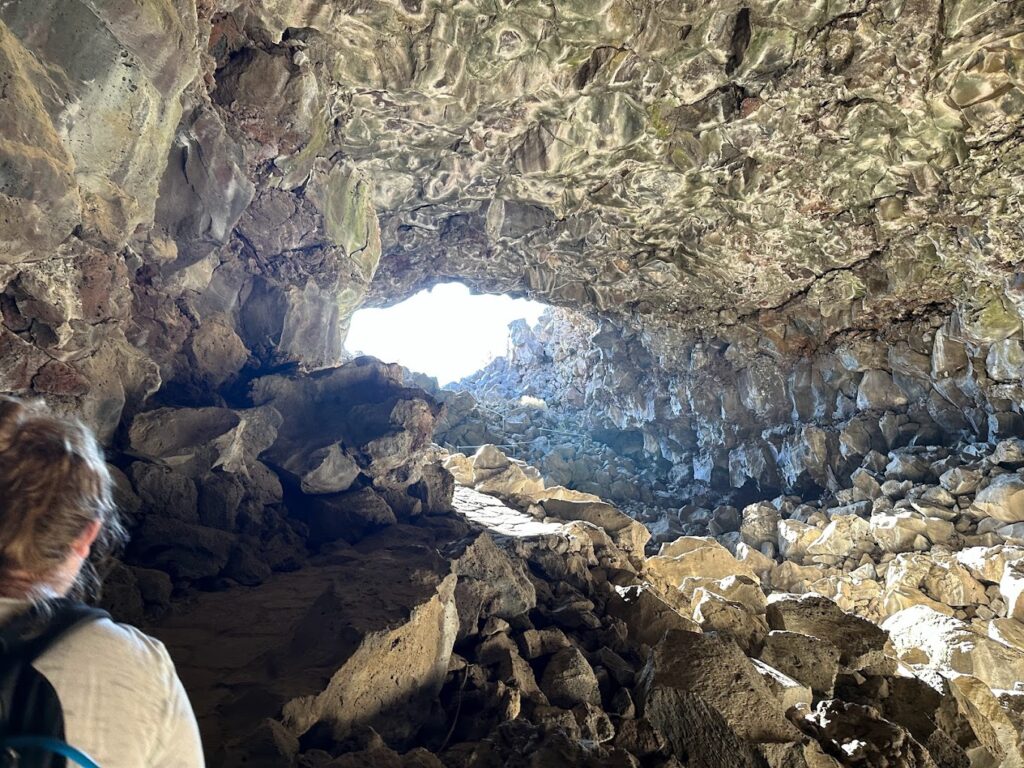
To do some off the beaten path caving (no ladders or trails going into the caves), head down Lyon's Trail out into the desert (still within the monument). Here you'll look for craters and then check the edges for cave entrances.
How are these caves at the Lava Beds formed?
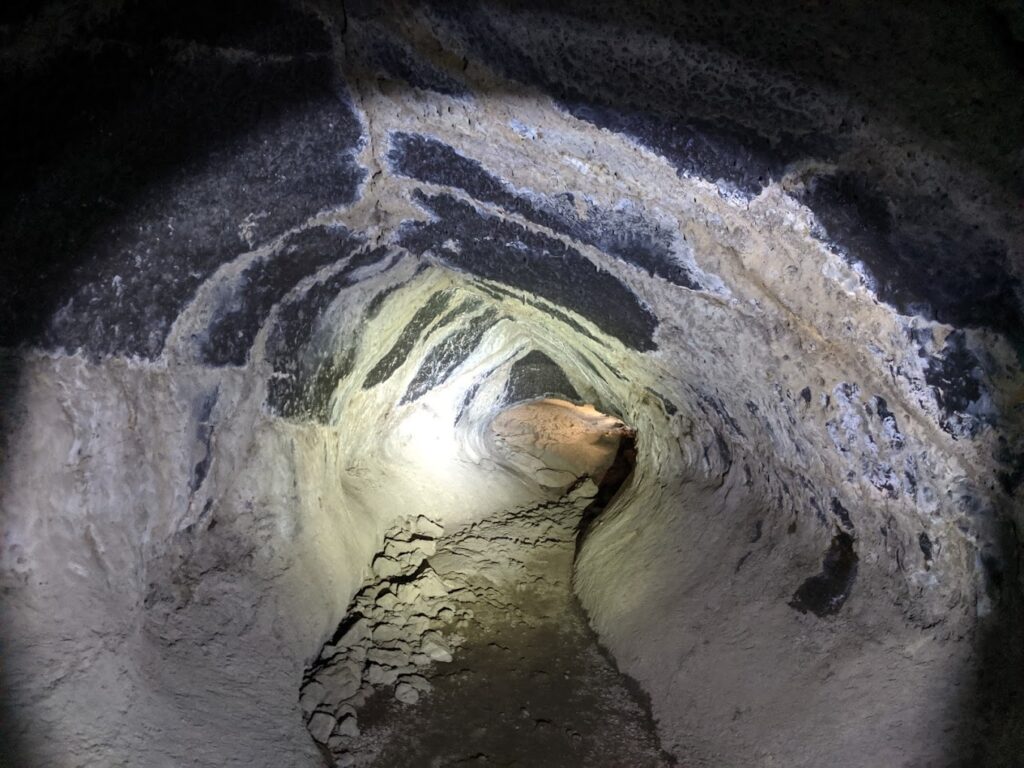
This site is actually on the side of the massive Medicine Lake shield volcano (this thing is huge—144 cubic miles). Around forty thousand years ago, lava erupted from Modoc and Mammoth craters. Lava also spewed out 950 years ago creating glass mountain (a spot with tons of black obsidian and pumice), and 1,200 years ago during the Callahan flow. As the lava flowed, it cooled from the outside in.
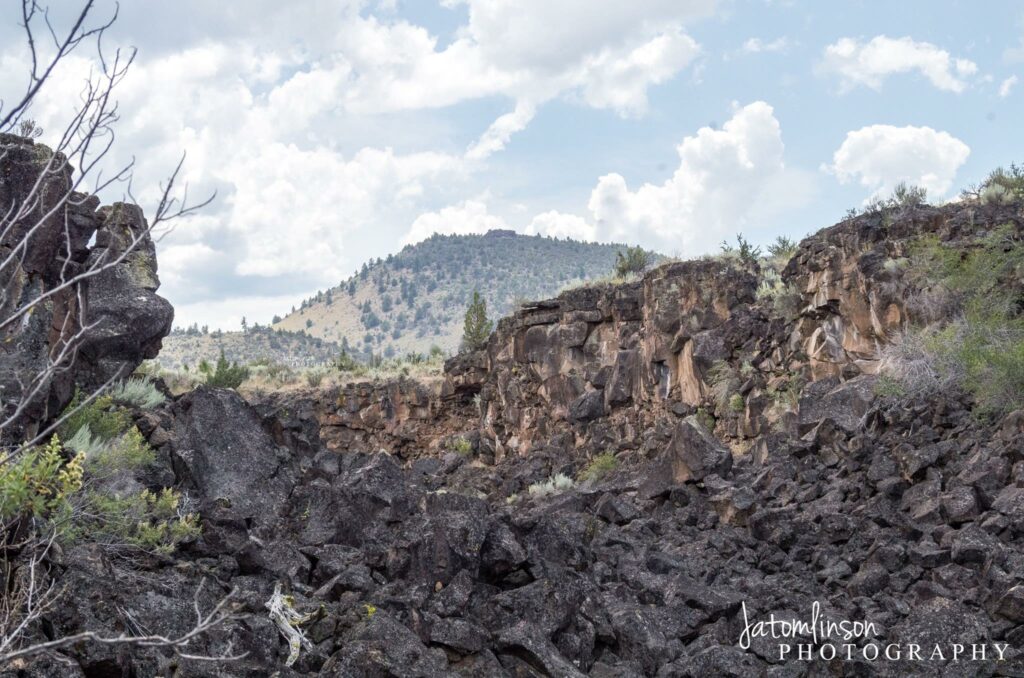
This means that as it cooled on the outside, it created a hard shell while rivers of hot molten lava continued to flow inside, eventually emptying out elsewhere or cooling off and hardening.
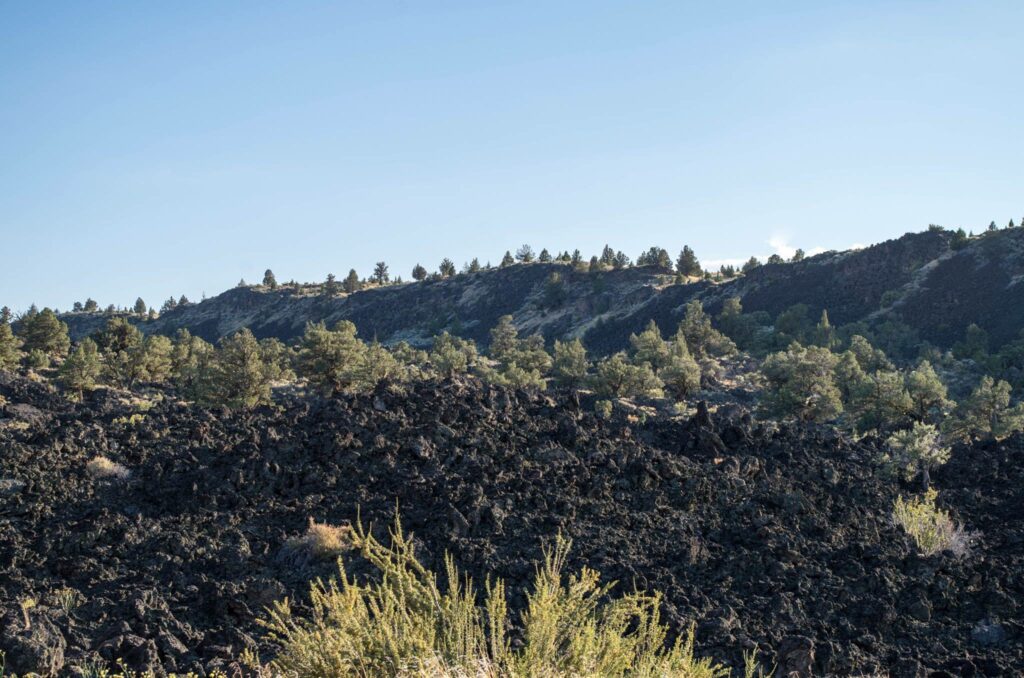
What was left was hundreds of hollow lava tubes that we get to explore today. There are also massive lava fields across the monument, filled with sharp, hardened black lava.
Historical Sites To See While You're There
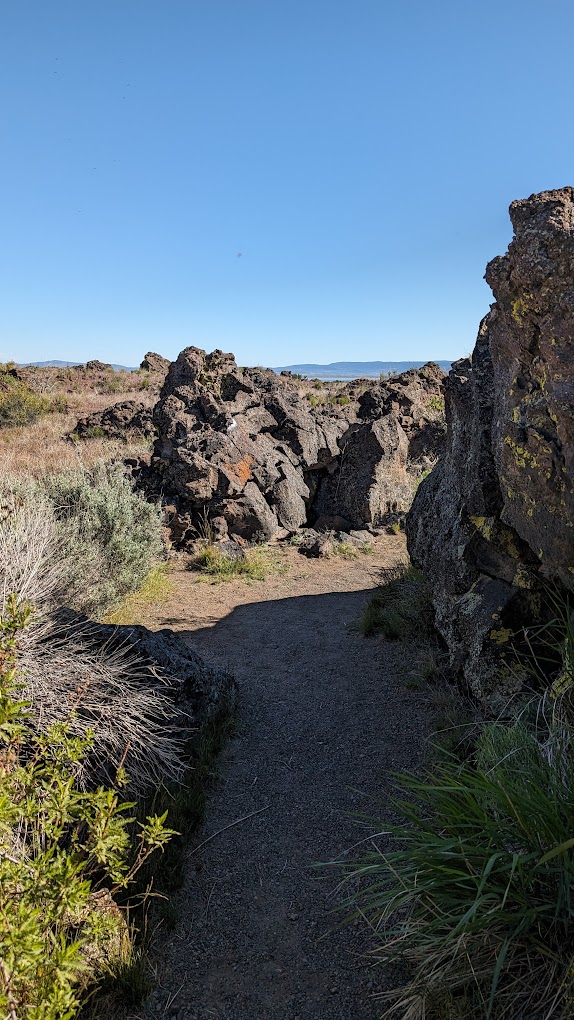
The history at this site dates back thousands of years. Native Americans peacefully occupied this land and left behind pictographs to document their time in the area, back when much of the area was still covered in an ancient lake. A tragic war happened here. From 1872 to 1873, a small band of Modoc Indians hid in caves as they were attacked continually by the US Army. They were outnumbered ten to one, and many of the Modocs were elderly people and children. You'll want to see Captain Jack's Stronghold to see the kinds of areas they were trying to survive in, and may also want to see Gillem's Camp. Both of these spots are at the north end of the park.
In later years between 1935 and 1942, the Civilian Conservation Corps came in and built the stairs, ladders, and trails that visitors use today to access the caves.
This is just some of the wide and varied history you can find at the Lava Beds National Monument.
Tips For Your Trip To The Lava Beds National Monument
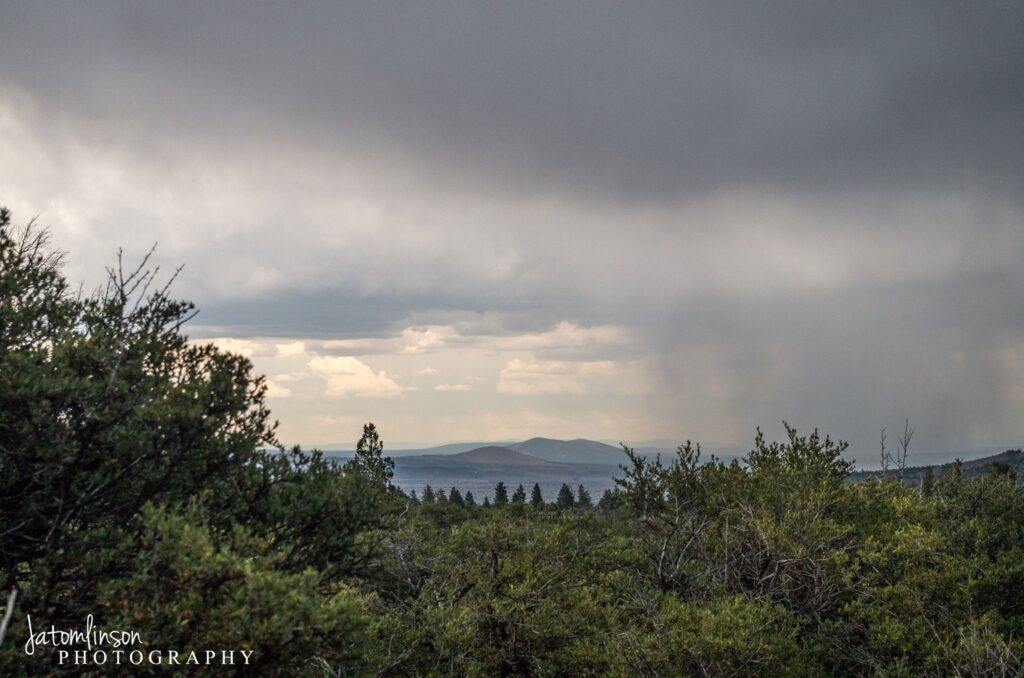
Do NOT Wear Shoes That You Have Worn Into Caves Outside Of This Monument
It might seem like a weird rule, but it's for the safety of the bats that live in the park. White nose syndrome is killing bats across the US and is slowly spreading. It's a white fungus that grows on a bat's nose. To stop the spread, a rule has been in place for years not to wear shoes that have been worn into other caves outside of this monument, so plan ahead. Please don't make the bats suffer.
Flashlights And Batteries
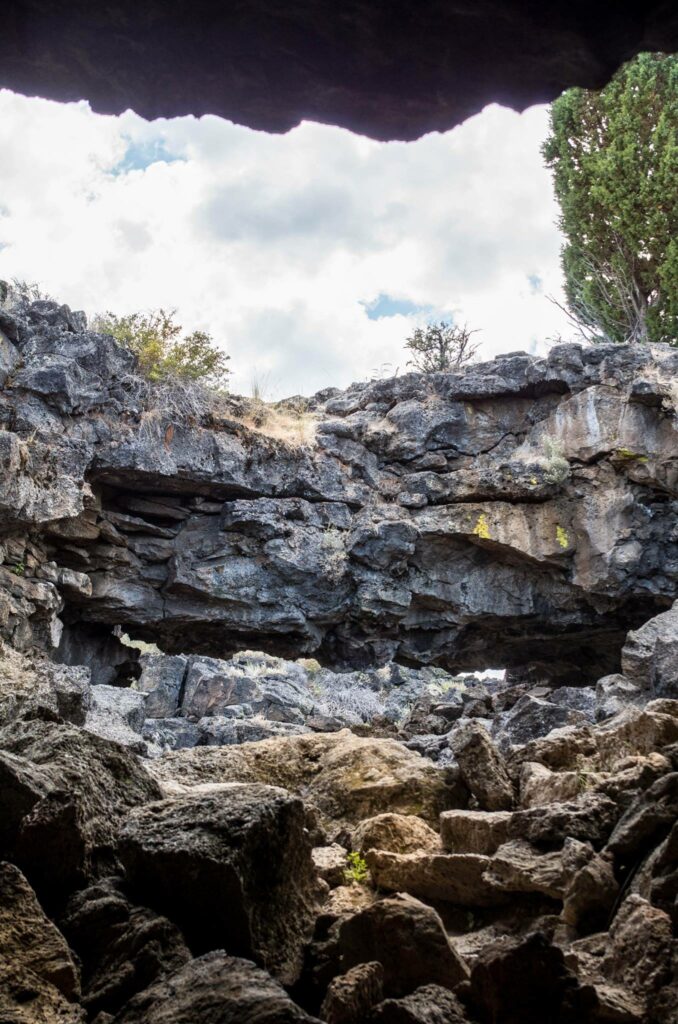
You're going to need flashlights and extra batteries. While there are some cool caves that have skylights which let light in, those and all other caves at the monument are too dark to enter without a flashlight. I've been down there several times and seen people who are just passing through, unprepared, who don't have a flashlight at all. They get about ten feet into the caves and have to turn around.
You'll need at least one flashlight per person, and extra batteries for those flashlights. We usually go in with one headlamp and handheld flashlight per person.
Tip: Don't have flashlights and hard hats? You may be able to borrow some from the Visitor Center. However, if it's a busy day, they may not have any available for you to borrow. It's best to bring your own. You don't need crazy expensive flashlights, just lights that are good enough to get you in and out of a cave. Test your lights out at home in a pitch black room to see how bright they are and how far they shine into the darkness.
Water And Snacks
The next thing you'll need to take is lots of bottled water and snacks. If you plan to spend the day down there, you should have four or five bottles of water per person. You could spend a week and still find things to do, and should definitely plan on spending at least a day. You should also bring plenty of snacks, like power bars, granola bars, and trail mix. You might also want to pack a picnic lunch. When you're out adventuring like this, you'll drum up a big appetite.
Sanitizer
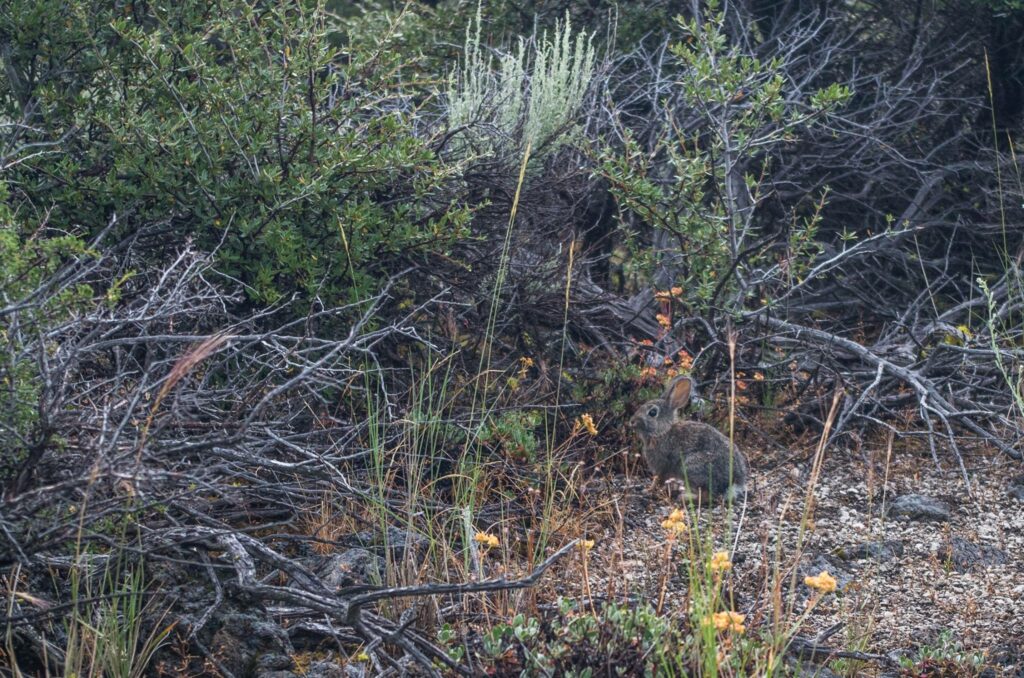
Sanitizer is also on the list of musts. There are bathrooms at the Visitor Center with running water, but if you're out between caves and want a snack, you'll want sanitizer. You might not think it's a big deal, but you'll be using your hands to help navigate most of these caves, and every surface inside is covered in rabbit and mouse poop. Yeah, you heard that right, it's everywhere. In some caves there is bat guano as well (though if there are bats nesting in caves, those caves are likely to be closed until the bats move on). Just bring some sanitizer and you'll be good to go.
Clothing
What should I wear to the Lava Beds National Monument? That depends on what kind of caving you plan on doing. Many of these caves have lots of little holes you can climb into that lead into other chambers. If you'll be crawling around, you'll need knee pads and thick gloves to get over the sharp lava. If you're just going to go through the improved caves (the ones with ladders leading into them as well as trails), then you should be wearing sturdy close toed shoes (sneakers or hiking boots), and a baseball cap at minimum, though we recommend a hard hat, (I've seen people slice open the tops of their heads on cave roofs several times). The caves also maintain a cool temperature throughout the year, so you may want to bring a sweatshirt and keep it in the car in case you need it.
Tip: In the summer, bring sunscreen. There is no shade on the trails between caves and parking areas.
Extra Funds For The Visitor Center And Gift Shop
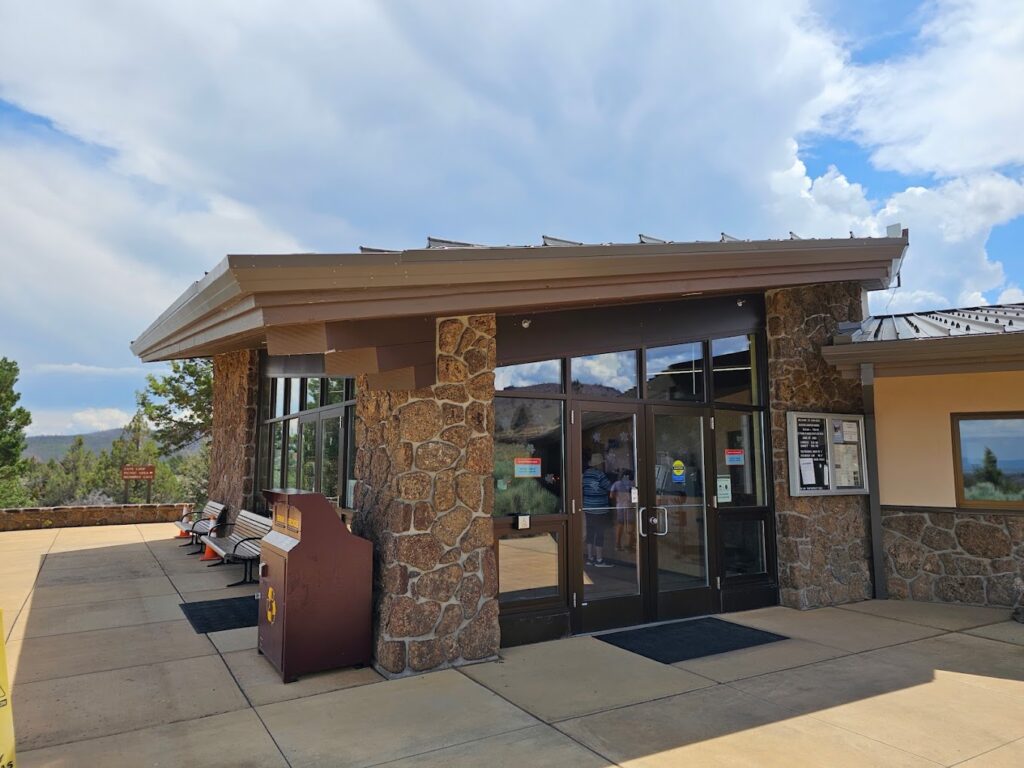
The Visitor Center is pretty cool. One part is like a little mini museum with facts and interesting history information about the Lava Beds, the history of the people that lived or fought there, and information about the geology of the area. Another part of the Visitor Center is a little gift shop. You might want a tee shirt or a stuffed animal to commemorate your trip. My favorite thing at the gift shop is actually the books with history and information about the area. My favorite is a little black and white book called Lava Beds Caves by Charlie and Jo Larsen.
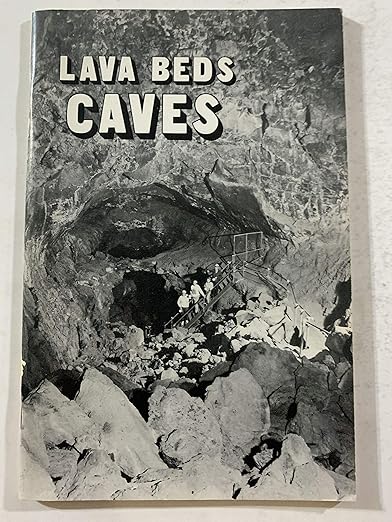
You can get it on Amazon at a steep price, or pick it up at a more reasonable price at the Lava Beds gift shop if they have it in stock.
Am I Capable Of Going Through These Caves?
Many caves require that you stoop down to move under low hanging obstacles (though there are many that do not). They also require that you be able to navigate ladders and stairs. While some of the 'improved' caves are easier to get through, all caves here require some amount of climbing over large boulders, some of which may not be solid. If you have good balance, can stoop, boulder, and climb up and down stairs and ladders, you should be good to get through all of the improved caves. Unimproved caves will require crawling, climbing over large obstacles, and squeezing through crevices. If some of these things sound unreasonable to you, then speak to a park ranger at the Visitor Center to see which caves are your best options.
Lava Beds National Monument Information
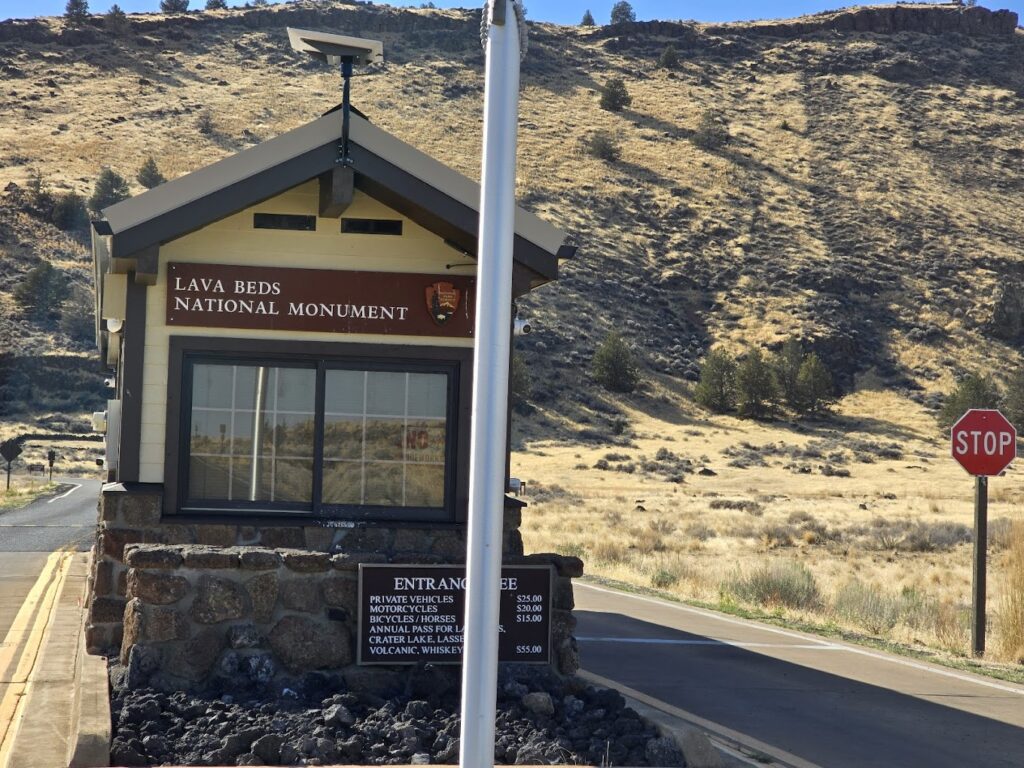
- Location: 1 Indian Well HQ in Tulelake, California (this is the Visitor Center address).
- Fees:
- Get the yearly pass which gets you into the Lava Beds, Crater Lake, and two other parks for $55, or get a day pass for one carload of people for $25.
- Note: passes are sold at the park entrance at the north end of the park. If the park entrance booth is closed, head in to the Visitor Center to buy your pass there.
- Get more information and updates at the Lava Beds National Monument website.
PLEASE NOTE: Caving, exploring, hiking and adventuring are all at-your-own-risk activities. Always tell someone where you're going, and when you plan to return. If there are places to register at the start of trails, do so with your name, the date, and the time, so people know if you went down a trail and didn't come back.

